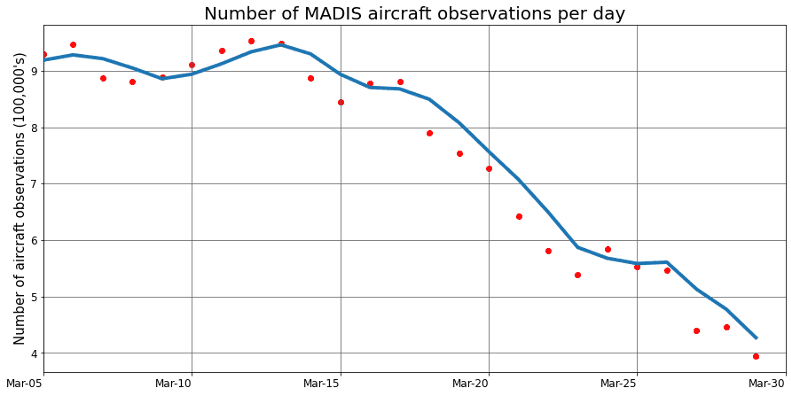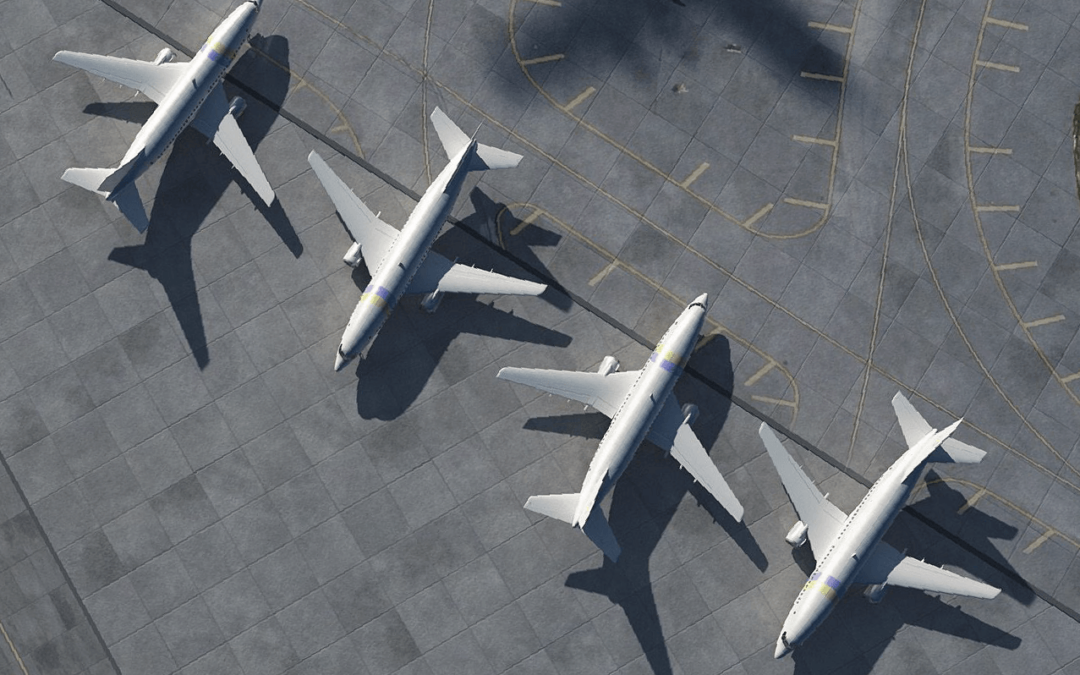Weather forecasts around the world are being affected by the COVID-19 pandemic, but our solutions remain largely unaffected in providing our clients accurate, reliable insights. Let’s take a closer look at the situation:
As countries enforce travel restrictions in a collective effort to slow the spread of COVID-19, commercial flights are being grounded at an unprecedented rate. Many do not realize this, but commercial airplanes are equipped with weather observation equipment that provides data on upper atmospheric conditions over oceans that can directly impact weather forecasts. There are two datasets collecting nearly a million weather observations from airplanes each per day:
- The World Meteorological Organization’s Aircraft Meteorological Data Relay (WMO AMDAR)
- The U.S. National Oceanic and Atmospheric Administration’s Meteorological Assimilation Data Ingest System (NOAA MADIS)
As planes travel to and from locations around the world, they feed supercomputer models that, in turn, feed weather models from NOAA down to your local news station. But with travel restrictions in place, fewer planes are in the air, which is leading to loss of these aircraft’s oceanic weather observations. U.K. meteorologist Simon Proud recently shared a plot showing the downturn of daily aircraft observations from AMDAR:

Source: https://twitter.com/simon_sat
According to the chart, meteorologists have lost more than half of the peak daily aircraft observations since the beginning of March. This impacts the skill score of leading weather prediction models, which have improved wind, relative humidity and temperature forecasts by up to 20% over last few years as WMO recruited more airlines to participate in its AMDAR program.
This reduction in AMDAR and MADIS, however, should not have a dramatic impact on day-to-day weather forecasts; it’s overall trends that could be affected. Meteorologists use several tools to create forecasts, including old-school methods, to supplement numerical weather prediction models. After meteorologists collect weather observations, they integrate them into supercomputers running numerical weather prediction models plotting forecasts up to 2 weeks out.
Using weather observations around the world as initial points, differential equations are calculated using complex algorithms at grid-like vertical and horizon points globally. The more weather data meteorologists have integrated into supercomputers, the better performance we get from numerical weather prediction models at higher resolution.
Our commitment to providing accurate weather risk datasets
At Athenium Analytics, we rely on more than just AMDAR and MADIS data to fuel our models. Our team of meteorologists and data scientists have created several modern products to continue providing the high-quality solutions our clients can depend on. We have diversified our weather observation collection with ground stations, ships, buoys and weather balloons to provide vast weather data coverage around the world.
The bottom line is that our weather data and forecasting tools remain largely unaffected by the drop in commercial flights because we pull from so many different sources. If your company relies on tools like our Atlas API, BeaconHurricane forecasts or Dexter weather verification, you can expect the same quality and performance to help drive your business decisions.


